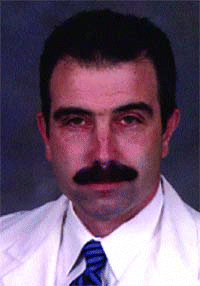A small scar, even with minimally invasive surgery, can look worse than a large scar due to poor surgical technique or poor healing capability, Dr. Pellitteri added. No matter how skilled the surgeon, individuals with poor circulation, diabetes, or immunological disease, or those on steroid therapy, may form unsightly scars because of compromised wound healing, he said.
Explore This Issue
October 2007Other Surgical Techniques
In addition to freshening skin edges, not raising the subplatysmal flaps to gain access to the thyroid compartment reduces dissection and scar tissue and minimizes healing time, said Dr. Terris. Subplatysmal flaps were not raised in the open or minimally invasive surgeries in his study.
Avoiding drains is another way to minimize scarring because surgeons don’t have to create a second stab wound, said Dr. Terris. Compared with minimally invasive surgery, the chance of fluid collection is greater in open surgery due to increased tissue removal. Drains are supposed to prevent subsequent seroma or expanding hematoma, although data suggest they aren’t needed, he said.
Endoscopic techniques combined with the harmonic scalpel help to avoid the need for drains because the ultrasonic device’s hemostatic properties probably lower the risk of postoperative bleeding, added Dr. Terris.
Another strategy to reduce scarring is using medical glue to eliminate cross-hatching that may occur with traditional stitches, he said.
A sutureless closure that doesn’t pull or create traction lines in the upper layers of the skin can certainly help to avoid scars, agreed Dr. Pellitteri. The use of Dermabond is appropriate for small incisions.
Sutured skin for larger incisions does not have to result in an unsatisfactory scar either, he said. Location of the incision, avoidance of crossing the skin crease when suturing the wound, and burying the suture rather than placing it at the skin surface can minimize skin tension and scarring, explained Dr. Pellitteri.
Post-Surgery Management
Patients also play an important role obtaining good cosmetic results. For example, they can help reduce scarring by not pulling on the incision post-surgery, avoiding significant exercise that may aggravate the wound, and staying out of the sun and using sunscreen, said Dr. Terris. Sun exposure may cause a color mismatch between the scar and adjacent skin.
Massage may also be helpful for reducing scar tissue, although this technique should not be used until six weeks after surgery, he added.
Patients also need to keep the wound clean and dry, Dr. Stack noted. He also suggested using wound healing or antiscarring treatments, such as vitamin E capsules or an over-the-counter silicone gel a week or two post-surgery.

Leave a Reply